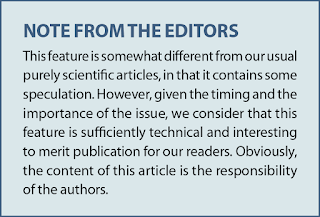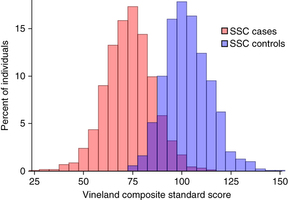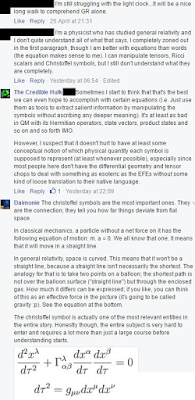Rebuke: "On the physics of high-rise building collapses".
Introduction
A while ago, I was alerted to an article by "four physicists" in a "scientific journal". Apparently, these authors had "shown" that the conspiracy is real. Behold:
However, the conspiracy crowd seems real happy with it. The Credible Hulk, for instance, had several `truthers' all over his page (here).
I decided that, as a physicist, it would perhaps be interesting to write a rebuke of this article. Now, I'd like to point out a few points before I start. First, this was published in the member magazine of a non-profit organisation for the promotion of physics and its practitioners. Second, it was not written by four physicists. Steven Jones was a physicist, apparently an outspoken Mormon and a truther. Robert Korol was a civil engineer. Anthony Szamboti is a mechanical engineer. Ted Walter is apparently only affiliated with Architects & Engineers for 9/11 Truth. So, to conclude, the study was by zero physicists. (By my long standing convention of not counting non-practitioners.)
It's also speculative and different from [the magazine]'s purely scientific articles:
A European scientific study has concluded that on September 11, 2001, the Twin Towers were brought down by a controlled demolition. The study, conducted by four physicists and published in Europhysics Magazine, says that “the evidence points overwhelmingly to the conclusion that all three buildings were destroyed by controlled demolition.”(your news wire)We discussed the article briefly, mostly dismissing it because it is not a scientific study, nor is it by four physicists, and its conclusions do not follow from the evidence.
However, the conspiracy crowd seems real happy with it. The Credible Hulk, for instance, had several `truthers' all over his page (here).
I decided that, as a physicist, it would perhaps be interesting to write a rebuke of this article. Now, I'd like to point out a few points before I start. First, this was published in the member magazine of a non-profit organisation for the promotion of physics and its practitioners. Second, it was not written by four physicists. Steven Jones was a physicist, apparently an outspoken Mormon and a truther. Robert Korol was a civil engineer. Anthony Szamboti is a mechanical engineer. Ted Walter is apparently only affiliated with Architects & Engineers for 9/11 Truth. So, to conclude, the study was by zero physicists. (By my long standing convention of not counting non-practitioners.)
It's also speculative and different from [the magazine]'s purely scientific articles:
On the Physics of high-rise building collapses
The authors start by noting that the (US) National Institute of Standards and Technology, NIST, launched its investigation in 2002. They claim that NIST stated its premise that the WTC towers were the only known cases of total structural collapse where fires played a significant role.
The authors continue to state that, "Indeed, neither before nor since 9/11 have fires caused the total collapse ...". That's interesting, but for a very different reason than you would suppose. Their source [1], a NIST report conducting a survey of just such historical information, notes:
The authors continue to state that, "Indeed, neither before nor since 9/11 have fires caused the total collapse ...". That's interesting, but for a very different reason than you would suppose. Their source [1], a NIST report conducting a survey of just such historical information, notes:
The results of the world-wide survey indicated that a total of 22 fire-induced collapses were identified spanning from 1970 to the present. The 2001 World Trade Center (WTC) collapses accounted for four of these events. Seven major multi-story fire events were also identified as having significant structural damage due to a fire, but did not exhibit collapse. (NIST)The authors continue to explain why steel-framed high-rises have endured large fires. While interesting, they continue by re-stating that countless other steel-framed high-rises have not suffered total collapse due to fires, citing the above source. As you see, the source does not seem to back this up. The applied trick seems to be in the wording, as the above quote is about collapsing multi-story buildings, but the authors are only speaking of "steel-framed high-rise" buildings. Steel-framed seems to indicate a building technique (for e.g. skyscrapers) and high-rise is a tall building used as residential or office building.
However, this is not very strong. The reason being that the number of buildings that fit their criteria are about 30 in 1970, 60 in 1980 and about 280 in 2001. As they have just explained, fires typically are not hot enough or last long enough to heat structural members, fire-suppression systems are present, they have fireproofing materials and they are designed to be redundant. So, about 260 buildings existed for some time before 2001; the problem is data bias. You are selecting buildings that are both well-protected and rare. Of course you did not find collapses in this very small selection.
They banter on a bit about how strong the materials are, but then point out that the head structural engineer, John Skilling, explained that the towers had been designed specifically to withstand the impact of a jetliner. While he did state that his people did a calculation showing they could withstand the impact (Seattle Times), it is not clear that this was in the design phase. More importantly, that is the structural damage due to impact. The issue, as various investigations concluded, is that the long-lasting fire with jet fuel added to it caused the material properties of the structure to deteriorate.
And now, they attempt to make Skilling say things he did not. The authors state that "In other words, Skilling believed the only mechanism that could bring down the Twin Towers was controlled demolition.". That's false. Skilling stated that he did not think a 200-pound car bomb would cause major damage, because of design redundancy. However, he thought that properly applied explosives of that magnitude could do it, such as done by the top demolition expert. That does not imply this is the only mechanism, merely that with a fixed amount (200 pound) of explosives, an expert could do it.
The authors continue to explain thermite demolition, where thermite charges are used to cut the support columns. You cut only on one floor, call it floor C. The floors above C collapse down onto C, crushing the columns that support floor C. The entire building thus collapses down, with each new floor taken up into the 'hammer' made of previously collapsed floors. A slightly more sophisticated method works from the inside-out, so that the collapse moves inward and downward, confining the debris.
While reading that explanation of thermite demolition, the first thing I thought is that a building with many support columns and a sufficiently hot fire would automatically collapse in the sophisticated manner. The reason being that a wide-spread fire is hotter near the centre, so those columns are the first to collapse. This puts more stress on slightly more outward columns, which thus collapse at a lower temperature, and so on.
 |
| NIST final report. Downward velocity of the north face roofline as WTC 7 began to collapse. |
The NIST report is really rather clear, with the leading hypothesis clearly attributing the collapse of WTC 7 to fires. The fires resulted in a loss of lateral support and the (critical) columns started buckling. The initial local failure progressed up to the east penthouse, as shown in the above video. The combined loss of lateral support and damage due to falling debris led to progression of the failure, ultimately resulting in the collapse of the entire structure.
What is actually quite interesting is that NIST expended considerable effort to compile evidence and determine whether intentionally set explosives might have caused the collapse. Numerous scenarios were investigated, but the lack of breaking windows and sound levels broadcasted by these explosions means this hypothesis lacks confirmation of any kind. Therefore, they concluded that there was no demolition-type blast that would have been intense enough to lead to the collapse.
Back to the authors, we meet the following. It is quite painful, so I'll quite the sentence verbatim:
"Given the nature of the collapse, any investigation adhering to the scientific method should have seriously considered the controlled demolition hypothesis, if not started with it. Instead, NIST (as well as the FEMA, which conducted a preliminary study prior to the NIST investigation), began with the predetermined conclusion that the collapse was caused by fires.I've described the developed Leading Hypothesis before. And, we've just discussed the hypothetical blast scenarios. Quite clearly, the investigation adhered to the scientific method and has seriously considered the controlled demolition hypothesis. They have neglected to read sources they cite.
The authors then carry on about the 'predetermined conclusion'. The preliminary study by FEMA was, apparently, not clear on the specifics. I wonder if the authors know what preliminary means. The authors to continue to claim some things that someone else allegedly said, without citing any sources. They then claim NIST never acknowledged free-fall, until they acknowledged stage II. I'm going to guess that NIST answered the entire collapse took longer than free-fall. They move on to claim that NIST computer models does not show the period of free fall. However, the NIST computations focussed primarily on reproducing empirical features of the collapse. Table 3-1 gives an impression of this. The analysis times recorded there indicate that the observed events are well within the analysis. (If you're wondering why these are not exact matches, there are numerous input variables that determine the exact timing of the events. What is important is that the events are in the correct order and that the observed times are within the zero to extreme debris parameter range.)
The authors claim that the NIST final report provides "an elaborate scenario involving an unprecedented failure mechanism", meaning that the fires weakened the lateral support allowing for buckling. The authors claim that the NIST was able to arrive at this scenario only by omission or misrepresentation, citing a pseudo journal as support for this allegation. The authors then claim that the NIST computer model fails to replicate the collapse, showing a metal-frame model under a very odd angle. If you look at the video material for WTC 7 (e.g. here), you see that various fault lines are clear in the exterior of the structure when it collapses. The "large deformations to the exterior" are observable, especially if you show the video in slow motion. The thing is, the clearest deformations, buckling near the bottom of the structure, are not observed in the video because other buildings block the view.
The authors move on to consider the Twin towers. They claim that the definite report by NIST does not contain analysis of why the lower sections fail to slow the descent of the upper sections. They cite an engineering mechanics paper and the Questions and Answers (here) regarding WTC 1&2. This strikes me as exceedingly odd, as the NIST NCSTAR 1-6 report concerned this topic. Here, "Insights gained from .. were used, in turn, to formulate and execute nonlinear, temperature-dependent finite element analyses of global structural systems to predict the collapse sequence of each tower. The structural analyses were guided, and where possible validated, by observations..". This quote is from the abstract. It seems that the authors are cherry picking a source that fits their story, rather than using the report concerning the topic under consideration. They also complain that NIST could not provide the full explanation because the computer models did not converge. What this means is that several models, each taking into account or detailing different aspects of a non-linear system, did not converge on a singular solution. What it does not mean is that they are all wrong; the combined systems provide you with a envelope inside which the observations fall. Non-linear systems are notoriously hard to work with, and often do not converge. A very limiting factor is the available computational power, which was far less when these investigations happened.
The authors then misrepresent partial sentences to make the NIST seem incapable. The authors make it seem that NIST cite a paper rather than not investigating the issue themselves. This condemnable misrepresentation by the authors is very revealing, in that they truly want to present a story despite the evidence. The quotes are found in section 9.4.4 "Comparison with other collapse hypotheses". It is in this setting that they cite the 2002 paper by Bazant and Zhou, and find it agrees with their hypothesis. They then cite the pseudo journal again, claiming "researchers" have found that the Bazant paper was wrong.
The authors wrap it up with overestimating the significance of "puffs of smoke", which sounds remarkably like dust expelled during the collapse from small structural fractures. They also wonder why the segment that fell into the interior of the building (e.g. the penthouse) is not visible within the rest of the videos. This is easily explained by their own explanation of how interior-first deterioration of support columns causes the building to fall inward. The authors continue their rant, for instance claiming that molten aluminum has a silvery appearance. While it is true that most metals in their liquid phase appear like metals, we also know of many metals that glow red hot at some point. The same is true for aluminum (e.g. video). As temperatures reached about a thousand degrees Celsius (NIST), an aluminum has a melting point of 660 degrees Celsius. At a thousand degrees, it will glow red hot - just like a light bulb. The mechanism is called black-body radiation (discovered by Planck, and part of a number of anomalies in 19th century physics that led to the discovery of quantum physics and the modern electronics of today).
The authors wrap it up with the following conclusion:
It bears repeating that fires have never caused the total collapse of a steel-framed high-rise before or since 9/11. Did we witness an unprecedented event three separate times on September 11, 2001? The NIST reports, which attempted to support that unlikely conclusion, fail to persuade a growing number of architects, engineers, and scientists. Instead, the evidence points overwhelmingly to the conclusion that all three buildings were destroyed by controlled demolition. Given the far-reaching implications, it is morally imperative that this hypothesis be the subject of a truly scientific and impartial investigation by responsible authorities. nI would like to provide my own version:
It bears repeating that fires have caused the total collapse of multi-story buildings before and since 9/11. Did we witness an unprecedented event on september 11, 2001? Yes, planes flying into buildings. The NIST reports, which support the likely conclusion that fires burn and melt, persuade a growing number of experts and laymen. The evidence points overwhelmingly to the conclusion that all three buildings were destroyed because, turns out, fire is hot. Given the far-reaching implications, it is morally imperative by utility, categorical imperative and scientific values that hypotheses continue to be tested in truly scientific and impartial investigations, as the NIST has done.
More comments
The authors have quite clearly been shown to misrepresent and cherry pick the NIST report fragments they present, in order to cling to a preordained conclusion even after it has been considered and subsequently demonstrated to be unpalatable. Amusingly, this is exactly what the accuse the NIST of.
There are a number of things that the conspiracy theorist try to use as if it is an enchanted sword granted to them by a naked lady living in a lake. For instance, that multiple news channels reported the collapse of WTC 7 too early. This is rather simply explained; the NYFD explained to reporters that WTC 7 would collapse, they misinterpreted and thought it had already happened.
To the question of "what other buildings do you know that collapsed only by fire", I saw someone respond with this video. That's the Faculty building of Architecture of Delft University of Technology. It burned down about a year before I entered. As you can see, the building also nicely falls towards the interior. Here, the collapse doesn't continue because the upper part of the building is not sufficiently heavy.
To the question of "what other buildings do you know that collapsed only by fire", I saw someone respond with this video. That's the Faculty building of Architecture of Delft University of Technology. It burned down about a year before I entered. As you can see, the building also nicely falls towards the interior. Here, the collapse doesn't continue because the upper part of the building is not sufficiently heavy.



